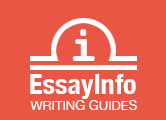The colon has three main uses, all of which involve pointing the reader toward the words that follow the colon. The colon always follows a whole sentence in these uses. Don't combine a dash and a colon.
The most frequent use is to introduce a list, often after expressions such as the following or as follows: Loretta Schwieterman appointed three people to the committee: David Allen, Greg Edwards and Jean Rheinhard. The Parks Department has scheduled open houses in the following communities: Valley View, April 5; Gantry, May 6; and Sierra Hills, Aug. 7.
Don't use a colon immediately after a verb. Incorrect: Loretta Schwieterman appointed: David Allen, Greg Edwards and Jean Rheinhard to the committee. Correct: Loretta Schwieterman appointed David Allen, Greg Edwards and Jean Rheinhard to the committee.
Second, the colon can be used to stress the word, words or sentence that follows it: He had only one thing on his mind: flowers. The news was good: No one would be laid off. When used this way, the colon replaces such words as that is, namely and for example. Capitalize the first word after a colon if it is a proper noun or the start of a whole sentence.
Third, use a colon to introduce a quotation longer than one sentence within a paragraph and to end a paragraph that introduces a quotation in the next paragraph. Use a comma, however, to introduce a quotation of one sentence that stays within a paragraph.
Also, use a colon to separate numbers in times (7:15 a.m.), to separate a title and subtitle, and after a business salutation (Dear Mr. Hyde:).

